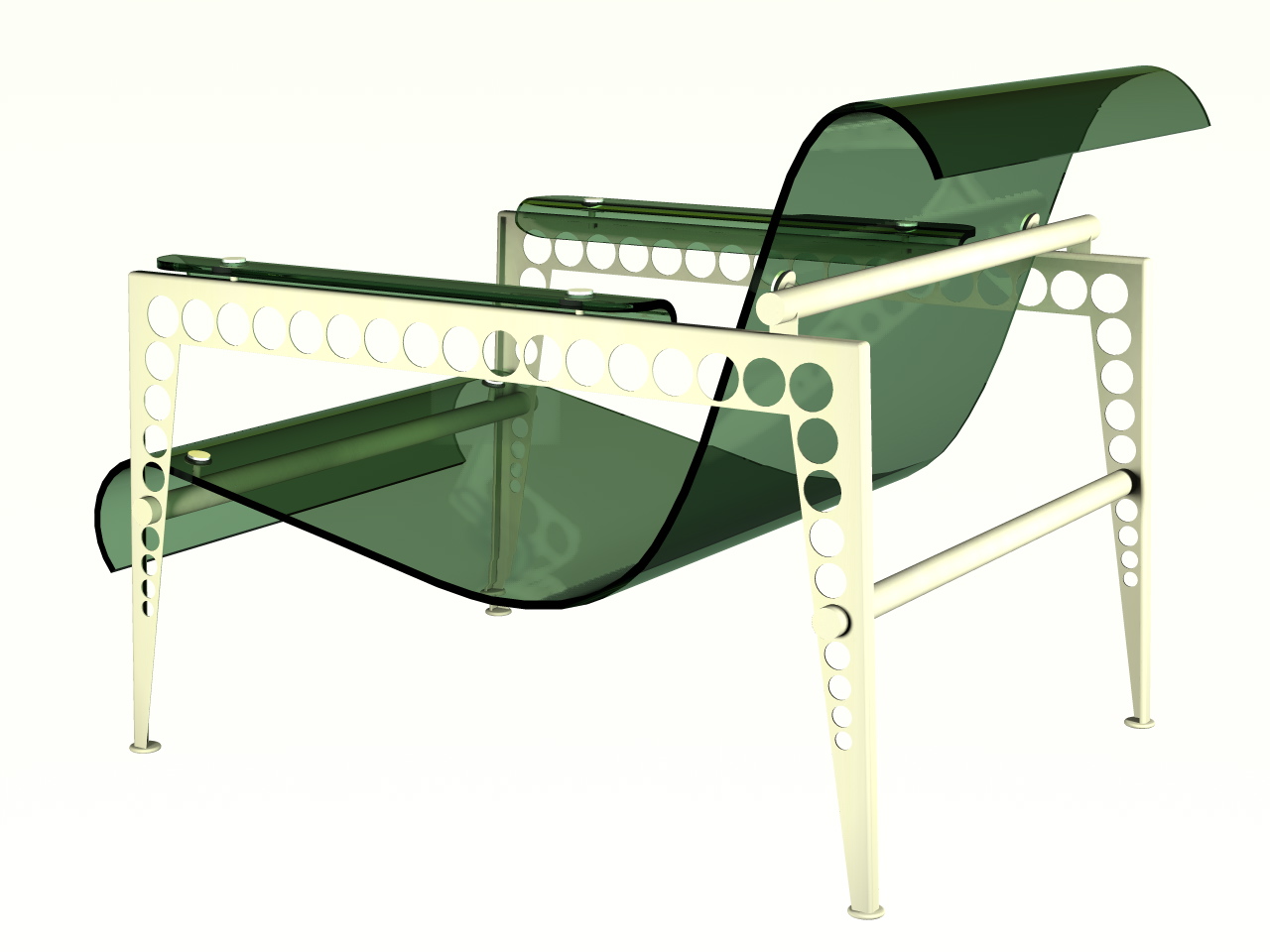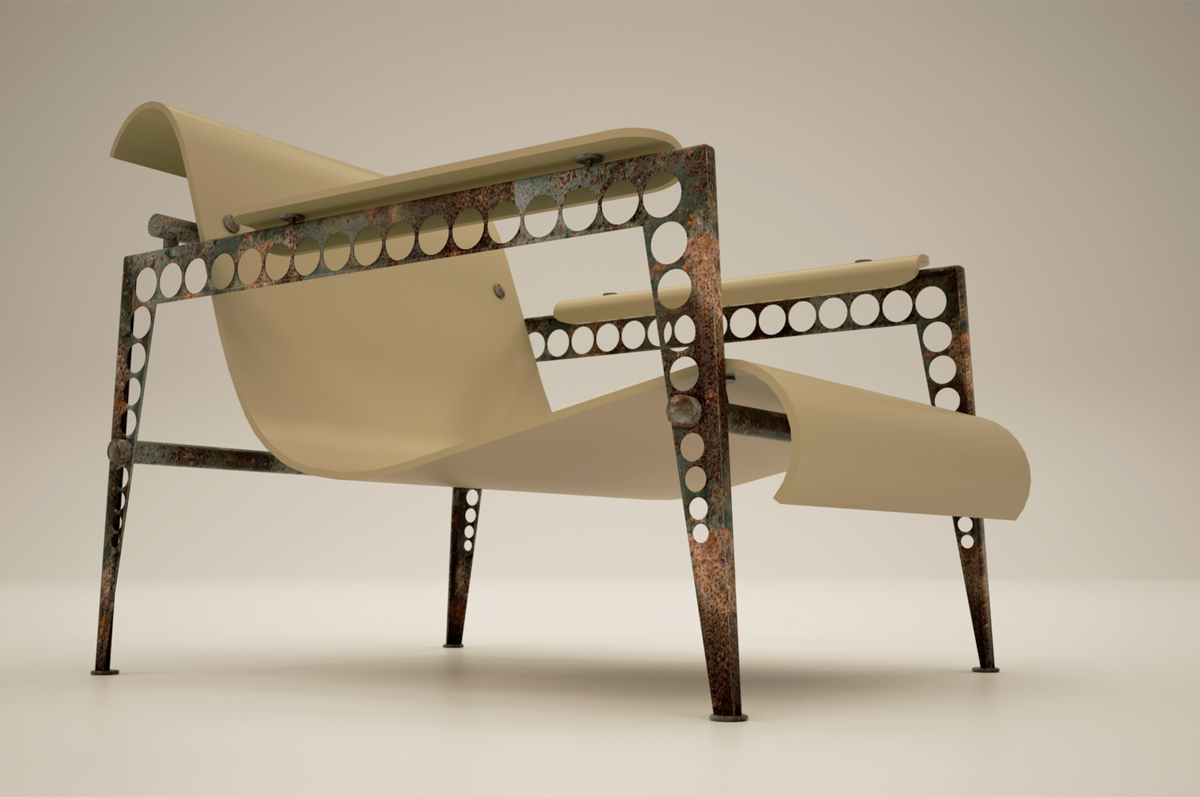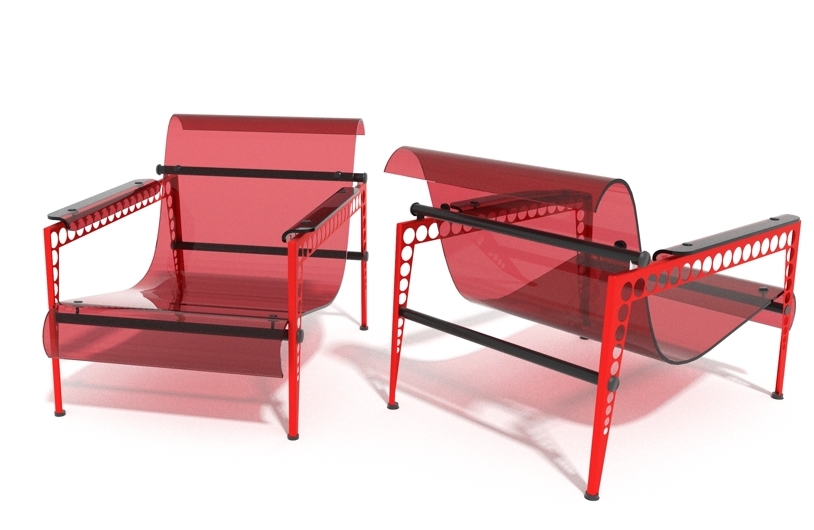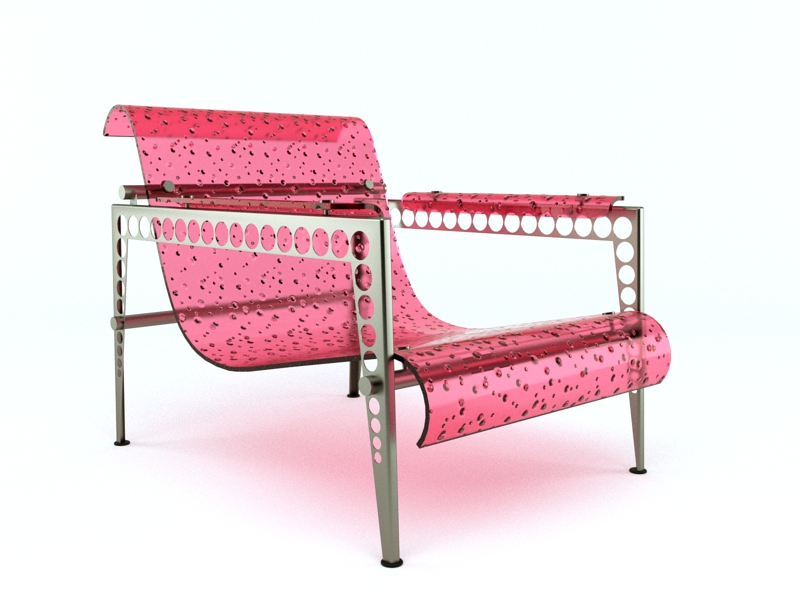Jacques André, Jean Prouvé - Garden chair
-
I really like this one.
Design: 1936
Production: 1937
Manufacturer: Ateliers Jean Prouvé, Nancy
Size: l 70 x h 74.5 x L 97.5; seat height 31.5 cms
Material: varnished sheet metal, acrylic glassIt would be nice to see your renders.


-
Thanks, very nice. Going to work on it. Too nice for free, but i'll take it.
-
The French touch design

-
1936? Wow. Great modeling. Very nice of you to share!
-
Thanks for sharing! Nice model...

-
Made some changes to arm rest fasteners & bar holders.
Thought they should be smoother for arm confort.
Bar holders rounded just looked more finished.
Added some height to foot plugs.

-
Thanks for interest. It's my pleasure to share.
Here is what I found about the baby doing some deeper search on the net:
Like Jean Prouvé, Jacques André came from a family of architects and craftsmen in Nancy. Their fathers were actively involved in the Ecole de Nancy, which played an important role in Art Nouveau. Jean Prouvé was a founding member in 1929 of the avant-garde Union des Artistes Modernes (UAM) and in 1934 recruited Jacques André as well, who had just received his architecture degree and had been working with him since the 1920s. In 1936 the two of them suggested to UAM on the occasion of the 1937 World’s Fair in Paris that the union present a complete ensemble of furniture. The intention was to create a combination of steel with acrylic glass and thus create an equivalent in furniture to high-tech architecture which, through its skeletal steel construction and generous use of glass, created an increasingly light appearance. Prouvé had produced a prototype for a Plexiglas object that same year and had presented it at the Paris autumn salon. In February of 1937, Jacques André began production of the collection, which was only intended to comprise six pieces. The chair was made of folded and perforated sheet metal and was constructed in Jean Prouvé’s workshop. Folding the sheet metal increased its resilience, while perforation reduced the weight and supported the visual sense of dematerialization. The material acrylic glass only appears to be light and was at that time very difficult to produce and to process. Upon the presentation of the ensemble in 1937, André also encountered problems with the weatherproofing of the material, which tended to develop cracks in direct sunlight. The anticipated positive response was not forthcoming and the hope of finding a manufacturer to produce the series was disappointed. MK
@ jpalm
Glorious rendering, love it, may I ask you which render soft you use?@ Pilou
No comment…
@ cotty
Great render, the rusty texture is great but although the material you used for the seat is nice, I think it lacks the acrylic transparency.@pbacot
Yeah, I think it was the good time, lot of things to invent. -
@elmer said:
@ cotty
Great render, the rusty texture is great but although the material you used for the seat is nice, I think it lacks the acrylic transparency.It's an old one and was a long time in the direct sun, so it bleached out and got so many hair cracks that the transparency seems to be gone

-
not my taste chair, but...

-
@ jpalm
Glorious rendering, love it, may I ask you which render soft you use?Twilight. Thanks again for the model.
Advertisement







